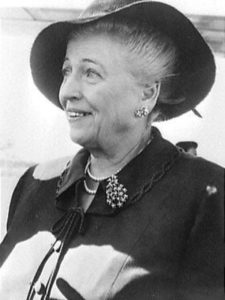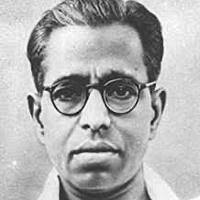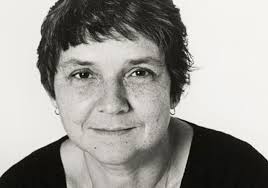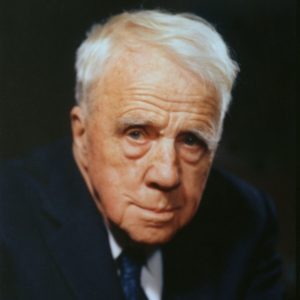We have decided to create the most comprehensive English Summary that will help students with learning and understanding.
The Enemy Summary in English by Pearl S. Buck
The Enemy by Pearl S. Buck About the Author
Pearl S. Buck (26 June 1892 – 6 March 1973) was an American writer and novelist. She is also known by her Chinese name Sai Zhenzhu. In 1932, she won Pulitzer Prize for her novel ‘The Good Earth’. She was the first American woman to win the Nobel Prize in literature (1938) for her rich and truly epic description of peasants’ life in China and for her biographical masterpieces. She was a prominent advocate of the rights of women and the minority groups.
| Author Name | Pearl S. Buck |
| Born | 26 June 1892, Hillsboro, West Virginia, United States |
| Died | 6 March 1973, Danby, Vermont, United States |
| Movies | The Good Earth, Pavilion of Women, Dragon Seed, Satan Never Sleeps, China Sky, China: The Roots of Madness, Guide |
| Awards | Pulitzer Prize, Nobel Prize in Literature |
| Nationality | American |

The Enemy Introduction to the Chapter
“The Enemy”, written by Pearl S. Buck is a heart-rending portrayal of the conflict between a man’s heart and mind. It tells us about how people can help enemies on human grounds. To hate our enemy is natural and justifiable, especially during wartime. This story beautifully depicts how a human being rises above : his prejudices to help a wounded enemy.
The Enemy Theme
In the chapter ‘The Enemy , the author stresses on the fact that humanity requires one to overcome prejudices and hatred especially against one’s enemies. Through this chapter, the author conveys the message that t nanism transcends all man-made prejudices and barriers.
The Enemy Summary in English
Dr Sadao and his wife, Hana stood outside their house. A man suddenly appears out of the ocean. They ran towards him. To their shock, he was an American prisoner of war, who was badly wounded and had become unconscious. Sadao is torn between his duty as a doctor and his loyalty towards Japan. As citizens having a sense of national loyalty, they felt it their duty to put the man back into the sea.
However, soon they rose above narrow prejudices and brought the man into their house. Even though they faced open defiance from their domestic staff, they looked after the man. They realised the risk inherent in harbouring an enemy. But Dr Sadao knew that he would not be arrested and condemned by the ruthless General as he himself might need his services any time for an operation. Sadao informed the ailing general about the enemy in his house. The latter plans to get rid of the American, and promises to send people to do the needful. However, the General forgot to do so. After a while, as the American got better, Sadao made arrangements for him to go to an island nearby, from where he could try to get off enemy boundaries.
The Enemy Main Characters in the Chapter
Dr Sadao
A Japanese doctor trained by Americans. Dedicated surgeon and doctor; kind; prejudiced against the white man.
Hana
She is the wife of Dr Sadao. They met in America, became friends and got married in Japan. Balanced woman; stands with her husband; responsible; dignified and graceful.
Tom
He is an American prisoner of war. Strong will-power.
General Takima
He is a famed Japanese war hero. He is selfish and careless.
Yumi
The servant who looked after Dr Sadao and Hana’s children. Loves children, loyal to the country, prejudiced against white men.
Domestic servants
Loyal to the country and prejudiced against white men.
The Enemy Summary Questions and Answers
Question 1.
Why didn’t Sadao want to know anything about the white man?
Answer:
He didn’t want to know any details about the white man because he didn’t want to become emotionally involved with him. The less he knew about the white man, the better it would have been for both, him and the white man.
Question 2.
How is Hana’s perspective about the white man different from Yumi’s perspective?
Answer:
Hana sees the white man as a person who is in need of help and not as a nameless enemy who should be killed, as per Yumi. This point is central to the story because it talks about how all people are similar and that they should all be treated in a humane and respectful way.
Question 3.
The theme of racism is reflected in the story. Give examples.
Answer:
The theme of racism is reflected in the story in several ways:
Because of the stress of Sadao’s father on ‘purity of race’ and traditionalism, Sadao didn’t start a relationship with Hana until he was sure that she “had been pure in her race”.
Yumi refused to touch the American or wash him before the operation. Moreover, when he left, she “cleaned the guest room thoroughly … to get the white man’s smell out of it.” Sadao has strong feelings against white people. Both Sadao and Hana felt that Americans were racists.
Question 4.
What did Dr Sadao do to help Tom escape to freedom?
Answer:
Dr Sadao knew that the wounded American sailor, Tom could be arrested any time. So he decided to help him in escaping. He decided to give his private boat with food and clothes in it. He could row it to a little island not far from the coast. Nobody lived there. In this way, he could escape to freedom.
Question 5.
Why did Dr Sadao help in the escape of the American soldier? Was it an act of treachery? Can you justify his action?
Answer:
Dr Sadao had given the information about the wounded American to the General. In turn, the General had promised to send assassins to kill him and get rid of the body. Sadao did wait for the General’s people to arrive. In the back of his mind, he knew he was a doctor whose job was to save people. Therefore, when the authority failed, Sadao decided to help the American escape. It cannot be called an act of treachery because he had been an absolute doctor and a citizen, and more importantly, a good human being. He did not want the person, he had served, to be killed.
Question 6.
Why did the messenger come to Dr Sadao? What did Hana think about it?
Answer:
Dr Sadao had been summoned to the palace to treat the ailing General. This relieved Hana, since she expected it to be a punishment for helping and providing refuge to an enemy. As the General was ill, he could require an operation any moment. Hana got very anxious to think about the consequences her family might have to face for harbouring an enemy soldier. When an official in uniform knocked her door, she thought that he might have come to apprehend her husband.
Question 7.
In what context does Hana remember General Takima? What does she infer?
Answer:
While applying medicine to the young soldier, as Sadao operated on him, Hana wondered if the stories of torture of POWs were true. She then remembered how General Takima ruthlessly beat his wife. Hana deduced that if General Takima could be so cruel to his wife, he could as well be extremely cruel to a prisoner. The deep red scars on the white man’s neck, confirmed her apprehension.
Question 8.
How did Dr Sadao ensure that the American soldier left his house but he himself remained safe and secure?
Answer:
Dr Sadao was a Japanese surgeon. After treating the American war prisoner, he informed the General as a true Japanese about the soldier. But as a doctor, he saved his life by providing him right treatment and helped him escape in the darkness of the night.
Question 9.
Why did Hana wash the wounded soldier herself?
Answer:
Hana, wife of Dr Sadao, washed the wounds of the American prisoner of war herself because the domestic servants refused to do it as he was from an enemy country. They all left the doctor’s house.
Question 10.
How does the writer indicate that Dr Sadao’s father was a very traditional and conventional man?
Answer:
Dr Sadao’s father was a very traditional and conventional man. He believed that the islands in the distance were the stepping stones to Japan’s future. He was a quiet man. He never joked or played with his son. His father was stern but cared a lot for his future. He believed in traditional and arranged marriages. He was proud of his nation and never used foreign goods. Everything in his room was made in Japan. He did not sit on a chair or sleep on a bed and rather slept on a mat.



